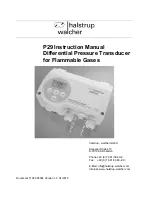
BW Broadcast technical manual
Page 5
Technical data
3.23 POWER AMPLIFIER BOARD
The RF signal from the exciter section of the combo board arrives at the MCX RF input connector CON1 via a
coaxial cable. From here the 50 ohm input impedance is matched to the gate of the FET transistor T1 by the
impedance matching network formed by C1, C2, C4, C4, L1 and L2. R1, R5, VR2 and C5 provide bias control to
the gate of T1 from the output of IC1B. R4 and R5 along with IC1B and VR4 supply bias to T1 from the +18V volt-
age regulator and bias reference. C8 and C9 provide decoupling for the regulator.
L, C7, R12 and FB1 provide 24 volts to T1’s drain from the 24 volt line as well as providing some impedance
matching to the output of T1. Further impedance matching from T1’s drain is composed of L4 and C18-C21. C10-
12 and R1 provide filtering and RF decoupling to the power feed.
The RF output is fruther fed into a low pass filter composed of C22-0 and inductors L5 to L7. These components
reduce the level of any harmonic products generated by the power amplifier. The output of the low pass filter
feeds into the VSWR sensor which generates our forward and reverse RF power measurements for metering and
for VSWR fault protection and alarms. The RF line passes through ferrite ring RFT1. This ring also has 14 turns
of wire as a secondary winding. IC2 and associated resistors R24-R47 buffer the sensors outputs and provide a
level suitable for the control/LCD boards microcontroller and protection circuitry.
The RF output sniff for the front panel is realized by R17 which is placed very close to the RF output line. A coaxi-
al cable connects this picked up RF output to the front panel.
A temperature sensor circuit is located close to the main RF transistor T1. This temperature sensor is mounted
into the heatsink and consists of the sensor itself TS1 which is located under the board and an op-amp circuit for
level adjustment. The op-amp IC1A and associated components convert the output signal from the sensor itself to
a level more suitable for the microcontroller and protection circuitry on the Control / LCD board.
CON connection block provides an interface to the board for the power connections from the two power supply
modules. CON6 provides an interface to the LCD control board. This connector carries readings for the forward
and reverse power, temperature, PA voltage, 18 volts from the regulator off the AUX power line to power the
LCD control board and the combo board, and last but not least the PA power modules control line which controls
it’s output voltage. This control signal is derived from the LCD / control board and is wired through the power
amplifier PCB and out through CON to the power supply module.















































